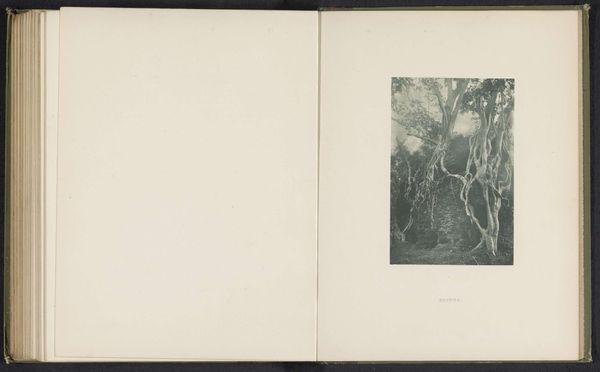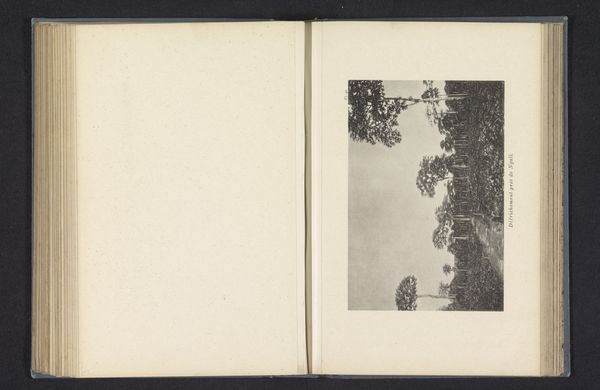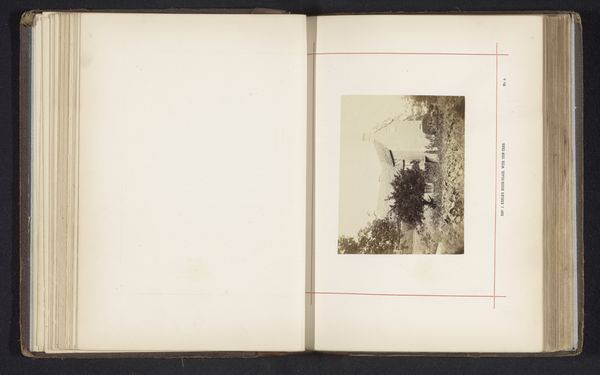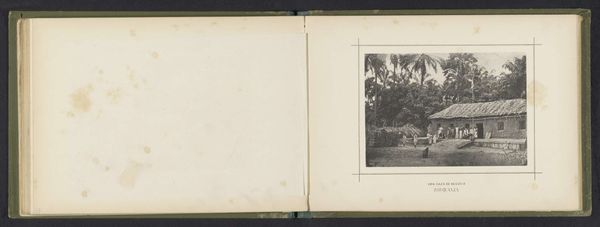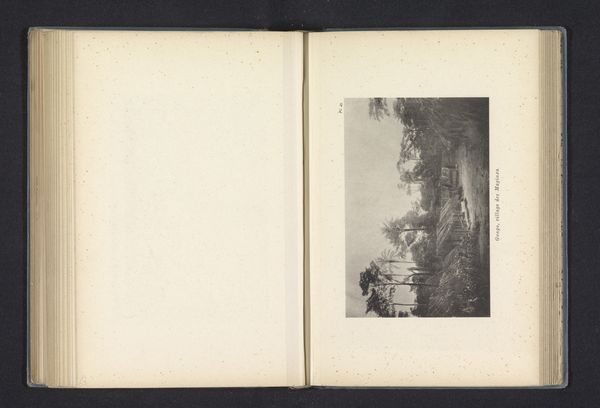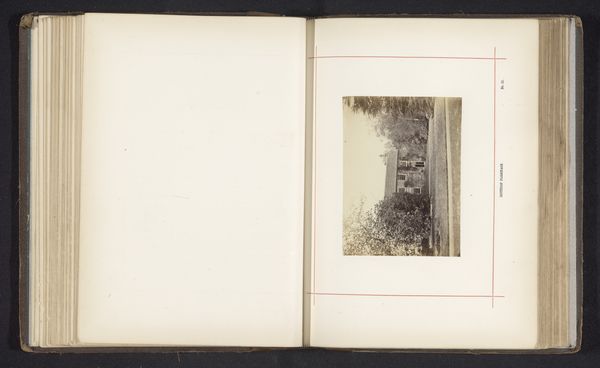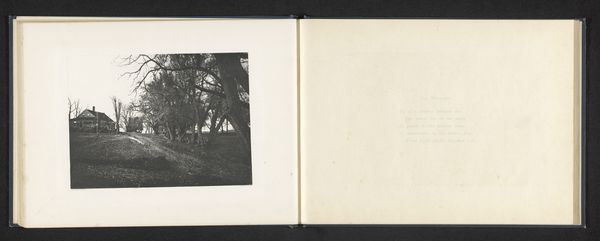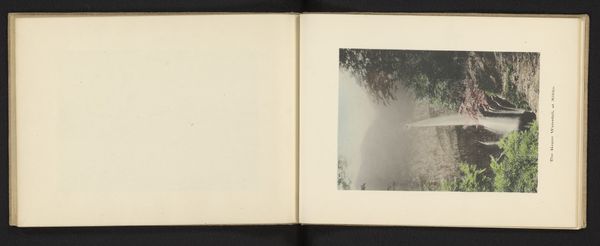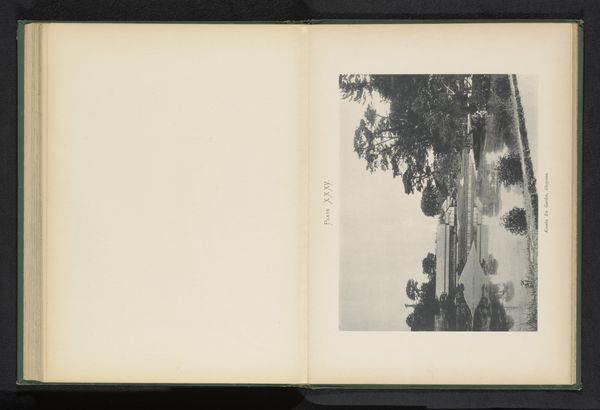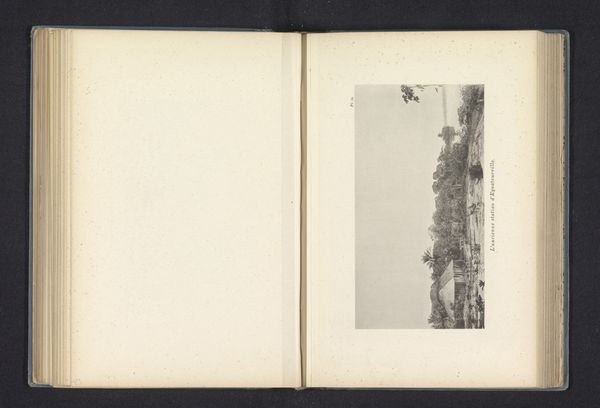
print, photography, albumen-print
# print
#
asian-art
#
landscape
#
photography
#
albumen-print
Dimensions: height 145 mm, width 193 mm
Copyright: Rijks Museum: Open Domain
Curator: This is an albumen print from 1896 by Henry William Cave, titled "Jetawanarama dagaba at Anuradhapura." Editor: My first impression is one of serene stillness. The muted tones and dense foliage framing the structure give it a kind of timeless quality. Curator: Indeed. The dagaba, a type of Buddhist shrine, resonates deeply. Its solid form rising from the earth symbolizes enlightenment and spiritual ascent. The careful composition evokes a sense of awe and reverence. The surrounding trees form a sacred grove, adding to the overall atmosphere. Editor: It's interesting how the albumen process itself contributes to that effect. Albumen prints require meticulous preparation – egg whites, chemicals, skilled labor in the darkroom. These weren't mass-produced images, reflecting a significant investment of resources. We see the monumentality in the subject, as well as in the laborious photographic process. Curator: Precisely! Notice the verticality – the spire drawing the eye upwards. This intentional design isn’t just aesthetic; it is meant to visually connect the earthly realm to the spiritual plane. In Buddhism, height often represents transcendence. Editor: And consider the photographer, Cave, and his relationship to colonial Ceylon. His photographs served both a documentary and promotional purpose, showcasing the island's "exotic" landscape and ancient monuments to a Western audience. What was the labor system involved in its production? Curator: It also emphasizes the endurance of Buddhist faith and Sri Lankan heritage. This image creates a lasting impression, urging viewers to contemplate the significance of spirituality and human legacy. Editor: It makes you think about whose gaze is prioritized. This "serene stillness," as I called it, flattens out social context, reducing a dynamic living temple to a visual artifact. Curator: That tension enriches our understanding. Ultimately, the image preserves a tangible link to both cultural and spiritual past. Editor: Absolutely. Thinking about its making and reception challenges us to consider the social life of photographs, rather than viewing them simply as neutral documents.
Comments
No comments
Be the first to comment and join the conversation on the ultimate creative platform.
